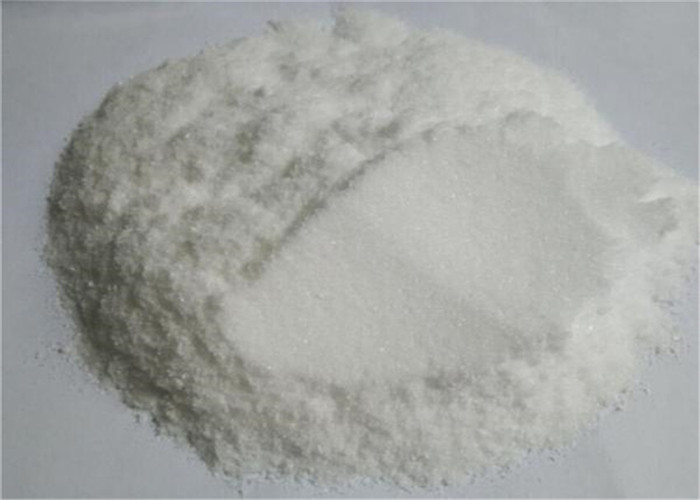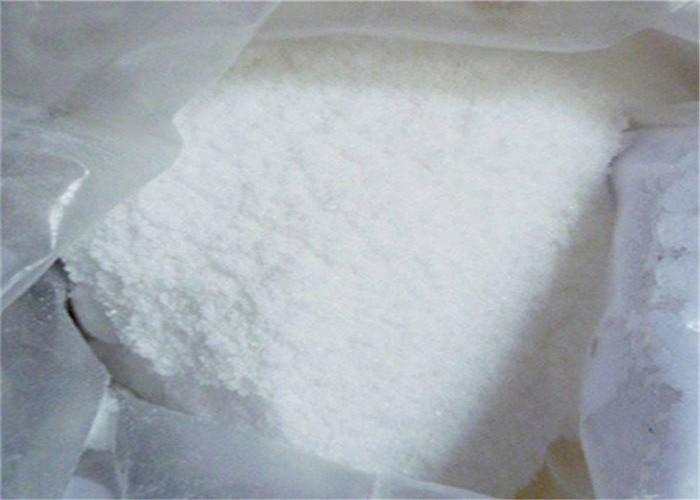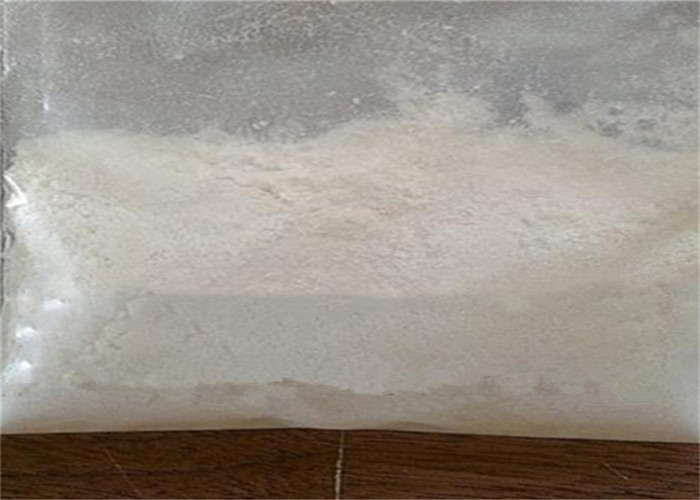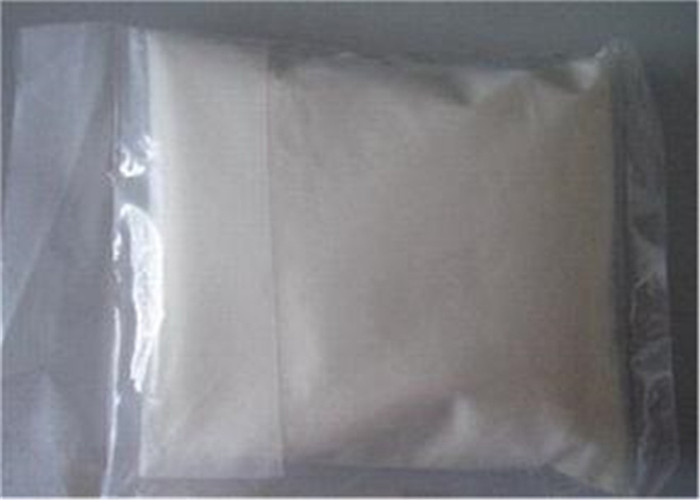| Nom du produit |
Granisetron hydrochloride |
| Synonymes |
1-methyl-n-(9-methyl-9-azabicyclo(3.3.1)non-3-yl)-1h-indazole-3-carboxamid;endo-1-methyl-n-(9-methyl-9-azabicyclo(3.3.1)non-3-yl)-1h-indazole-3-carboxa;endo-monohydrochlorid;midehydrochloride;1-METHYL-N-[(3-ENDO)-9-METHYL-9-AZABICYCLO[3.3.1]NON-3-YL]-1H-INDAZOLE-3-CARBOXAMIDE HYDROCHLORIDE;KYTRIL;BRL-43694A;GRANISERTROL HYDROCHLORIDE |
| n ° CAS. |
107007-99-8 |
| Formule moléculaire |
C18H25ClN4O |
| Masse moléculaire |
348.87 |
| Numéro EINECS. |
1312995-182-4 |
| Point de fusion |
290-292°C |
| Point d'ébullition |
532ºC at 760mmHg |
| Solubilité |
H2O: >10mg/mL |
| Point d'éclair |
275.6C |
| Steam pressure |
0mmHg à 25°C |
| Indice de réfraction |
1.69 |
| Apparence |
Poudre blanche |
| Pureté |
99% |
| Qualité standard |
USP |
| Storage Conditions |
Room temp |
| Emballage |
1kg / sac en feuille;25kg/fût |
| Shipment |
SMU;DHL;Fedex;TNT;UPS |
| Heure de livraison |
3-5 Jours de travail |
| Payment terms |
T/T;Western union;Gramme d'argent;Bitcoin |
| Usage |
For nausea and vomiting caused by radiotherapy, cytotoxic chemotherapy |
Descriptions:
Granisetron hydrochloride was originally developed by Beecham in the UK in the mid-1980s. Dans 1991, the combined Smithkline-Beecham (SB) Company first introduced the 3 mg injection Kytri1 in South Africa. So far, including 1mg oral tablets, 1mg injections, granisetron hydrochloride has been listed in more than 40 countries and regions in the United States, Britain, France, Japon, Allemagne, Italy and so on. Smithkline-Beecham (SB) merged with Glaxo and transferred the product to Roche.
Foreign research data show that granisetron hydrochloride has a high degree of receptor selectivity. Its affinity for the 5-HT3 receptor is 4000-10000 times that of other receptors such as 5-HT1, 5-HT2, dopamine D1, D1, histamine H1, benzodiazepine, and opioid receptors. This difference in ondansetron is only 1000 fois. In the prevention trial of cisplatin-induced vomiting, granisetron hydrochloride three dose groups: 2 x 0.005, 2 x 0.05, et 2 x 0.5 mg / kg (iv) had anti-emetic rates of 93%, 96%, et 100, respectively. %, while the antiemetic rate of ondansetron 2 x 2.5 mg/kg was 89%, indicating that granisetron hydrochloride has stronger antiemetic activity than ondansetron at least 5 fois. Toxicity studies suggest that granisetron hydrochloride can achieve good anti-emetic effects at low doses with little side effects.
Applications:
It is a selective antagonist of serotonin 3 (5-HT3) in the peripheral and central nervous system. For nausea and vomiting caused by cytotoxic drugs or radiotherapy.
Antispasmodic drugs. Antiemetic drugs are used for nausea and vomiting caused by chemotherapy and radiotherapy.
Used as an antispasmodic
Usage And Synthesis
Outline of Granisetron hydrochloride Granisetron hydrochloride was originally developed by the British Beecham company in the mid-1980s. At 1991, the merged Smithkline-Beecham (SB) Company had pushed for the first time of 3 mg of injection Kytri1 to the market in South Africa. To date, y compris 1 mg of oral tablets, 1mg of injections, granisetron hydrochloride has already entered into market in United States, Britain, France, Japon, Allemagne, Italy and other more than forty countries and regions around the world. When the Smithkline-Beecham (SB) Company was merged with Glaxo Company, it transferred this product to the Roche Company.
Foreign research data has shown that granisetron hydrochloride has a high selectivity to receptor. Its affinity to 5-HT3 receptor is 4000 à 10000 time as high as its affinity to other receptors, such as 5-HT1, 5-HT2, dopamine D1, D1, histamine H1, benzodiazepine and opioid receptor. For comparison, the difference for ondansetron is only about 1,000 fois. For the test of its prevention of cisplatin-induced emesis in ferrets, the antiemetic rates in the three dose groups of granisetron hydrochloride 2 × 0.005,2 × 0.05 et 2 × 0.5mg/kg (iv) were 93%, 96% et 100 %, respectively while for ondansetron in 2 × 2.5mg/kg, this value was 89%, demonstrating that granisetron hydrochloride exhibited a at least five times stronger efficacy of anti-emetic than ondansetron. Toxicity studies suggest that granisetron hydrochloride can achieve very excellent antiemetic effect even in small dose with only minor side effects. Cependant, there may be sth abnormal occurring in cardiovascular system upon large doses. Since the recommended clinical dose of granisetron hydrochloride is small (3mg/d), which is only 1/25 (<1 mg / kg) of the lowest dose used in animal studies, donc, clinical application of it is very safe. Pharmacokinetic study has shown that granisetron hydrochloride has a half-life (t1/2) de 9 h in the body of patient while this value is 4 h at healthy people, 7.7 h in elderly people and 4.9h in young people. Granisetron hydrochloride is mainly metabolized in the liver and can be excreted through the feces and urine in the form of 7-hydroxy granisetron hydrochloride and other forms of metabolic product. For patients of liver damage or liver metastases, they have reduced plasma clearance rate with the scavenging rate upon renal insufficiency being 1/4 of the normal case. It has been observed of high first pass metabolism upon oral administration with the absolute bioavailability being 60%.
Domestic Market Analysis 1993, China has approved of the import of the Kytri1 injection (3 mg/ 3 mL) of British SB company, Registration No: X930279, and has allowed for in clinical trials. Dans 1994, the China-US Tianjin Smith Kline Pharmaceutical Co., Ltée. had used imported raw materials processing method for production of the injection of the 3mg granisetron hydrochloride and had obtained the approval of the Ministry of Health: (94) health medicine approved: J-10 number (fourth class) with the trade name being “Kay Reiter. ” Currently there are a number of domestic manufacturers having their products enter into market with the number of manufacture which makes formulation being up to dozen, see Annex I for details.
China has a large population with the annual number of newly identified cancer patients being more than 1.6 million. The nausea and vomiting induced by chemotherapy and radiotherapy-induced have been one of the serious side effects that doctors and patients worry of. Par conséquent, new antiemetics are in urgent demand. Currently, ondansetron class of drugs has occupied most of the market antiemetic including ondansetron (ShufuLing), granisetron hydrochloride (Kytril) and tropisetron (Oubiting), wherein the ondansetron and granisetron has been accumulated of large number of clinical application experience with good response from the doctors and has played positive role on improving the domestic situation of the treatment of chemotherapy vomiting. With the localization of products, the decreasing price and the increasing income level of people, antiemetics market will be certainly greatly improved. In this case, granisetron hydrochloride, as the secondary antiemetic drug entering into market, will certainly have good market prospects.The above information is edited by the chemicalbook of Dai Xiongfeng.
Instructions [Personnage]it is colorless or nearly colorless liquid clarity.
[Toxicology]This product is a highly selective 5-HT3 receptor antagonist and has excellent preventive and therapeutic effect on treating nausea and vomiting induced by radiotherapy, chemotherapy and surgery. Radiotherapy, chemotherapy and surgery and other factors can cause enterochromaffin cells to release 5-HT; 5-HT can activate the 5-HT3 receptors in central nerve or vagus nerve and cause vomiting reflex. The mechanism of this product in controlling nausea and vomiting is through antagonizing the 5-HT3 receptor in the central chemosensory area and peripheral vagus nerve terminal, further suppressing the nausea and vomiting. This product has high selectivity and no side effects such as extrapyramidal reactions, excessive sedation and so on.Dosage and usage amount]intravenous drip. Recommended dosage for adults is usually 3 mg. Administer it intravenously 30 minutes prior to chemotherapy. Most patients only need to be administered once with the prevention action against nausea and vomiting being more than 24 heures. The number of doses can be increased by 1-2 times if necessary, but the maximum daily dose should not exceed 9 mg and the infusion time should not be less than 5 minutes.
[Pharmacokinetics]healthy volunteers, after intravenous injection of this product for 20 ou 40 μg/kg, the average peak plasma concentration was 13.7 and 42.8μg/L, the plasma elimination half-life is approximately 3.1-5.9 heures. This product is widely distributed in the body with serum protein binding rate being about 65%. Most of them are rapidly metabolized with the major metabolic pathway being N-dealkylation and conjugation after aromatic oxidation. This product is excreted through the feces and urine.
Chemical Properties It is white or yellowish white crystalline powder and is odorless. It is easily soluble in water but hardly soluble in methanol, extremely hardly to be dissolved in ethanol and almost insoluble in ether. It has a melting point of 290-292 ??. For acute toxicity LD50, female mice, male and female rats (mg / kg): 17, 25, 14, 16, respectively. Intravenous injection.
Uses It is the selective antagonist of the 5-serotonin 3 (5-HT3) in peripheral and central nervous system.
Uses A specific serotonin (5HT3) receptor antagonist. Used as an antiemetic. Granisetron HCl is a serotonin 5-HT3 receptor antagonist used as an antiemetic to treat nausea and vomiting following chemothera py. Its main effect is to reduce the activity of the vagus nerve. It does not have much effect on vomiting due to motion sickness. This drug does not have any effect on dopamine receptors or muscarini c receptor Biological Activity 5-HT 3 receptor antagonist that possesses potent antiemetic activity.
Notre service
1.100% La politique de réexpédition est notre base commerciale. 100% de réexpédition immédiatement si votre colis reste en douane pendant 4 jours et n'est pas mis à jour.
2.Remboursement total pour 15 jours d'insatisfaction avec la qualité.
3.Nous pouvons fournir des échantillons gratuits.
4.Nous avons un emballage spécial ,Il peut être facilement passé à la douane. Il sera plus sûr.
5.Notre société coopère à long terme avec DHL.EMS.Fedex et ainsi de suite. Il peut être envoyé à votre main plus rapidement. La photo du colis doit être offerte dans les 12 heures suivant la réception de votre paiement de stéroïdes.
6.Si vous avez la chance de venir en Chine. Je peux te montrer notre labo.
7.Notre société a WU, MG, TT, et les moyens de paiement Bitcoin à l'avance. Vous pouvez payer 95% pour les peptides coûtent au début pour la commande, le reste peut nous offrir dans votre prochaine commande;
| Prohormone (Poudre brute) |
| Trénavar (Estra-4,9,11-triène-3,17-dione) |
| Méthylsténobolone |
| Epistane (Méthylépitiostanol) |
| Acétate d'épiandrostérone |
| Epiandrostérone |
| Hexadrone (6-chloro-androst-4-ène-3-one–17b-ol) |
| AT (1,4,6-Androstatriene-3,17-dione) |
| 6-Frère (6-Bromoandrostènedione) |
| DHEA ( Déhydroépiandrostérone) |
| 1-DHEA (1-Androstène-3b-ol,17-un) |
| 4-DHEA (4-Androstène-3b-ol,17-un) |
| 7-céto DHEA |
| 7-Acétate céto DHEA |
| 4-Androstène-3,6,17-trione |
| Adrénostérone (androst-4-ène-3,11,17-trione) |
| Mébolazine (Diméthazine) |
| Halodrol (4-chloro-17a-méthyl-androst-1,4-diène-3,17b-diol) |
| Méthoxydiénone |
| Androstènedione |
|
|
| Amélioration du sexe (Poudre brute) |
| Citrate de sildénafil (Viagra) |
| Tadalafil (Cialis) |
| Dapoxetine |
| Dapoxetine HCL |
| Vardénafil |
| Vardénafil HCL |
| Yohimbine HCL |
| Avanafil |
| Flibanser |
|
|
| Anesthésie locale (Poudre brute) |
| Benzocaïne |
| Benzocaïne HCL |
| Bupivacaïne HCL |
| Bupivacaine |
| Lidocaïne |
| Lidocaïne HCL |
| Pramoxine HCL |
| Prilocaïne |
| Prilocaine HCL / Propitocaïne HCL |
| Procaïne |
| Procaine HCL(Novocain / Novocaine) |
| Chlorhydrate de procaïnamide |
| Ropivacaïne HCL |
| Tétracaïne |
| Tétracaïne HCL |
| Mepivacaine |
| Mepivacaine hydrochloride |
| Trimecaine Hydrochloride |
| Dibucaine |
| Ropivacaine mesylate |
| Cinchocaine Hcl |
| Levobupivacaine |
| Chlorhydrate de ropivacaïne |
| Dimethocaine Hydrochloride |
| Chlorhydrate de proparacaïne |
| Dimethocaine Hydrochloride |













 Directeur commercial
Directeur commercial